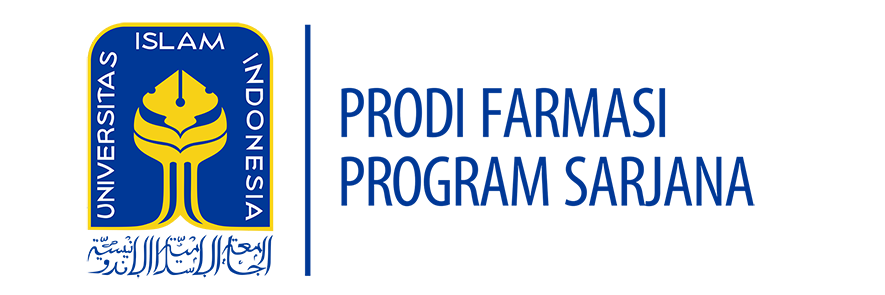| Module Name | Drug Design | ||||
| Module level, if applicable | 4th year | ||||
| Code, if applicable | SFA-990 | ||||
| Semester (s) in which the module is taught | Seventh semester | ||||
| Person responsible for the module | apt. Pinus Jumaryatno, M. Phill, Ph.D | ||||
| Lecturer(s) | apt. Pinus Jumaryatno, M. Phill, Ph.D
Dra. apt. Suparmi, M.Si. |
||||
| Language | English- Indonesia | ||||
| Relation to curriculum | Elective course | ||||
| Types of teaching and learning | Class size | Attendance time (hours per week per semester) | Forms of active participation | Workload | |
| Teaching | 50 | 3 | Collaborative discussion | Lecture: 3 (hour) x 14 (meeting) | 52 |
| Problem Solving | Problem Solving | Preparation and follow up 5 (hour) x 14 (self-learning) | 70 | ||
| Total workload | 122 hours | ||||
| ECTS | 4.36 ECTS | ||||
| Credit points | 3 CU | ||||
| Requirements according to examination regulations | Minimum attendance at lectures is 75% (according to UII regulation). Final score is evaluated based on assignment and reports (30%), Discipline (10%), and exam (60%) | ||||
| Recommended prerequisites | – | ||||
| Related course | Medicinal Chemistry | ||||
| Module objectives/intended learning | By the end of this course students should be able to:
|
||||
| Content | The course will cover:
1. Rational drug development and physicochemical properties influencing drug action 2. Drug-receptor interactions 3. QSAR 4. Prodrug 5. Structure based design 6. Computer aided drug design 7. Combinatorial chemistry |
||||
| Study and examination requirements and forms of examination | Mid-term, Final term, quiz, assignment, and problem solving | ||||
| Media employed | Text books, slides (power points), and video | ||||
| Reading lists |
|
||||
